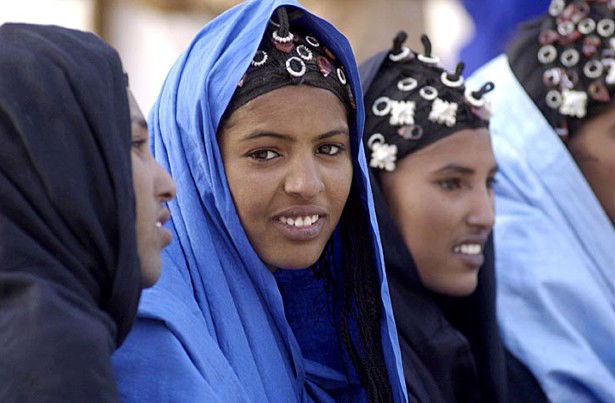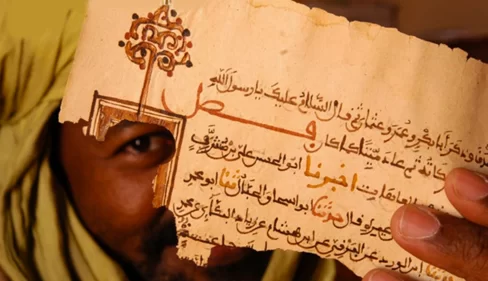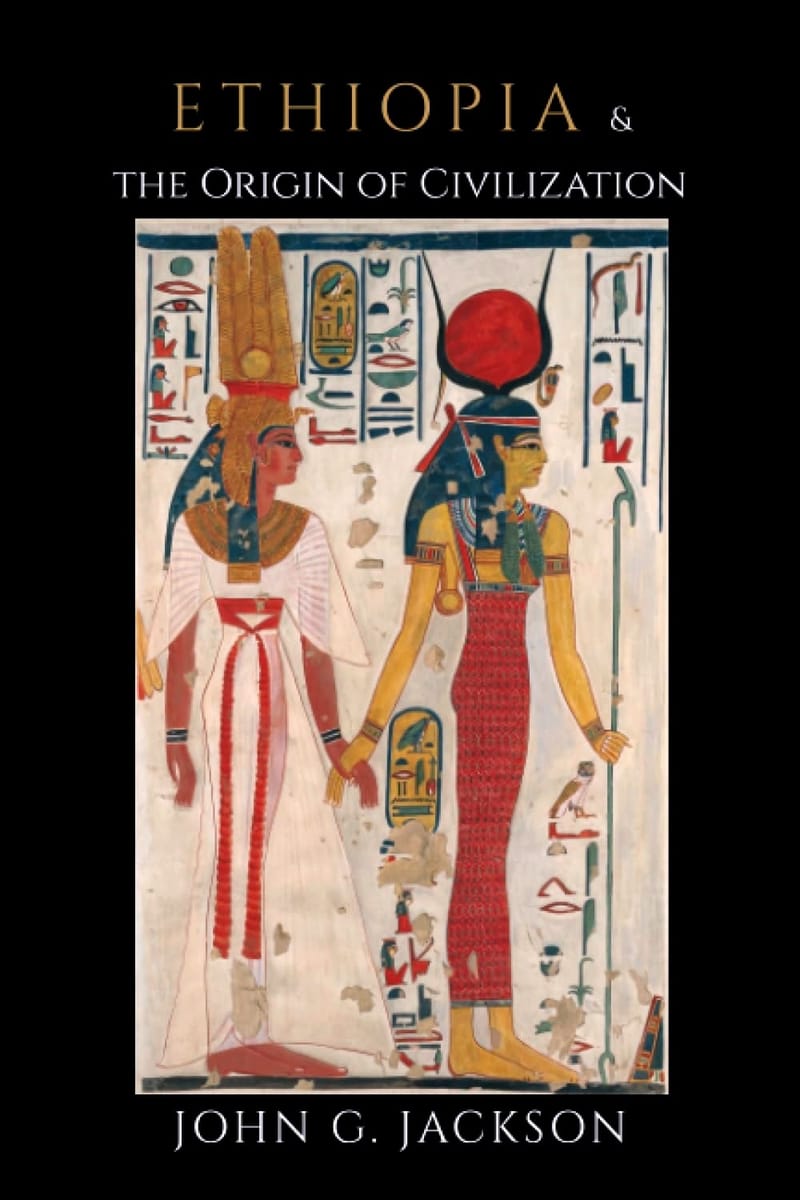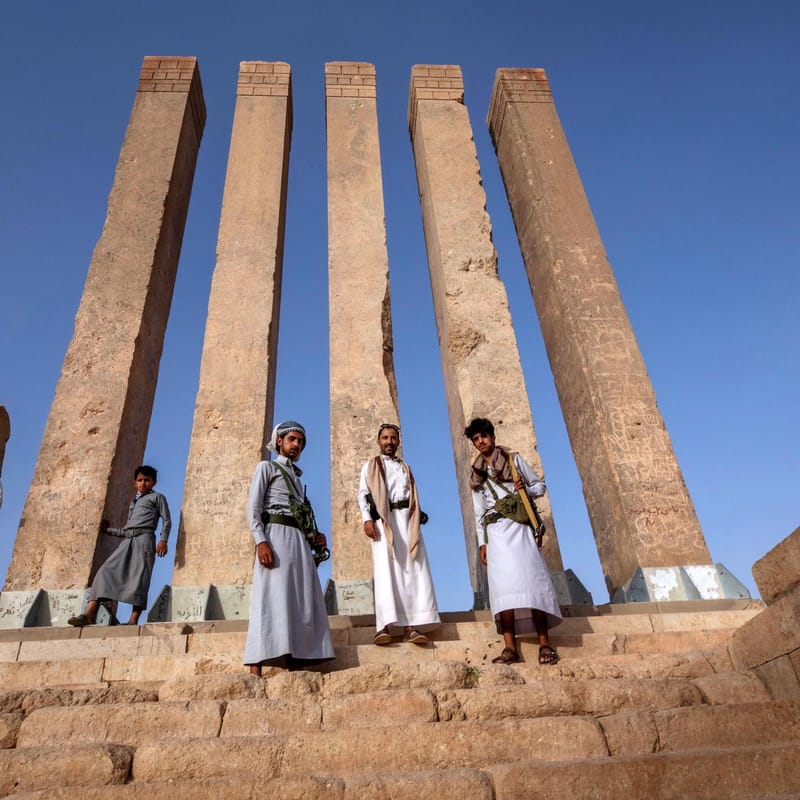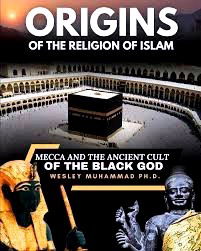Tariq Berry, The Unknown Arabs: Clear, Definitive Proof of the Dark Complexion of the Original Arabs
Revisionist history has imposed selective memory suppression techniques to separate the people dwelling in the area called today Africa and the Arabian Peninsula. Truth hackers had imposed this narrative: Arabs have no cultural and family affiliation whatsoever with most of the people dwelling in Africa. Yet, the Arab world is far more extensive than many had previously assumed. What is called today Middle East had long been inhabited by dark complexion or Black peoples. These vast regions were linked together to what is known as Africa without any borders. Unsurprisingly enough, long before 700 B.C., there has been an ongoing pre-Islamic migration of Arabs from Yemen to Somalia, Mombasa, Mozambique, and Dar es-Salaam to Timbuktu. Writers such as Philostratus and Strabo around the 1st century B.C., refer to the areas east of the Nile in Africa as “Arabia” and its inhabitants called either Arabs, Indians or Ethiopians. The Banu Musa or the Children of Moses the Prophet are found in Africa. In reality, Africa has always been an extension of the Arabian Peninsula and linked together by the Arabs since time immemorial. The crossing by the straits of Bab el-Mandab, the Red Sea, and the Canal of Suez have always been the passageway linking these ancient Arab families together from Yemen to Sudan and all the way to Lake Chad and the Sahara Desert. Reasonably so that, we find the Kunta Arabs in today’s Mali, Senegal, Mauritania, Gambia, and Guinea. The Fulani are found both in Africa and in Saudi Arabia as well. When the Muslims were still a persecuted minority group during the early days of Islam, the Prophet Mohamed told them to immigrate to Africa to seek refuge. Remnants of the Ommayad (the Quraish clan) fleeing from the Abbasis’ persecution escaped to the region of Lake Chad around 750 A.D. Many ancient tribes of Africa such as the Berbers, Yorubas, Songhai-Sonike, Fulani, etc … all came from the Arabian Peninsula. The black Hebrews from Yemen who landed in west Africa gave the name “Ghana” to what is known as the empire of ancient Ghana today. Jana, an Arabic word, means "Small Paradise". The Yoruba (descendants of Ya’rub the son of Qahtan from Yemen), the Ibo, Kanuri, the Akan, the Wolof (descendants of Abu Bakr Ibn’ Umar, the Sanhaja Himyarite tribe of Yemen, coming from the original Zenaga, a branch of the Sanhaja tribe from which came the name Senegal). The Asanti (Ashanti), the Zaghawa, the Igala, the Bariba, the Mandingo, the Songhai, etc… are all ancient Ethiopians or ancient Arabs. The ancient people called Ethiopians or Abyssinians are in reality Arabs who migrated from Yemen. In Arabic, the name for Ethiopians is El-Habash. El-Habash is an ancient tribe from Yemen. Contrary to today’s ideological stereotypes of what an Arab should look like, the original Arabs were Black or brown-skinned in complexion. Ibn Hazim of the 10th century A.D. wrote that, “El-Hassan was nicknamed the “Father of the Tar” because of the intensity of his brownness”. El-Hasan was the son of Ali (from whom the Alawites are the descendants), descendant of Abu Talib, the cousin of the Prophet Mohammed. Ancient Arabs considered dark complexion to be the complexion of a pure Arab. Fahidh, the famous Arab writer of the 8th century A.D. wrote that, “the Arabs take pride in their black complexion.” El-Fadl ibn Abbas from the Quraish tribe, says, “I am pure because the color of the Arabs is brown”. Ali, the son of Abu Talib and cousin of the Prophet Mohammed is described by Ibn Saad of the 9th century A.D.: “He was a black-skinned man with big, heavy eyes.” Musa the son of Abdella, son of Ali, is of the clan of Mansa Musa, the king of Mali who lived in the 14th century. Musa and Mohamed were the brothers of Idriss (the Idrisis found in Morocco). The Alawites, Idrisis, and the Shurafa all claiming descent from the Prophet Mohamed were as black as night and they were noble, pure Arabs. The Idrisis ruled Morocco since 788 and founded Andalusia (the children of Hamoud) and El-Yamama (the children of El-Akkader). The Shurafa who descended from the Prophet formed a kingdom in Sudan. While the ancient Arabs described themselves as the Black or brown-skinned color, they identified the Persians and Romans as the “Red” or light-skinned color. Most of the slaves of the Arabs at that time were “Red”, or light-skinned non-Arabs coming from regions such as Persia, Greece, Rome, and other places in Europe. The Arabs were once a very dark-skinned people described as Black. Then, they conquered and assimilated so many non-Arab such as the Persians, Turks, Greeks, Romans, etc… They conquered and took many non-Arab women through concubinage. During Arab dominance, the Europeans were the major source of slaves. As A. Rogers wrote: “Each time Yakub Al-Mansur (the Moroccan ruler who dominated Spain for 800 years and the third ruler of the Muʾminid dynasty of Spain and North Africa ) returned to Africa from his campaigns in Europe, he did so with large numbers of white slaves”. To the point that, being “white” (red) meant being a slave because most of the Arabs’s slaves were European. Europe has to reinvent itself by working hard to overturn this perception of reality and bury this shameful past. The mixing of Arab with European and Indo-European blood was ongoing for more than a thousand of years. After expelling the Arabs who invaded and occupied Europe for seven hundred years, the Europeans landed in Africa in the late 15th century for a revenge campaign against the Moors (Arabs) who invaded their land in the 8th century. Most of the Almoravid army who conquered Spain came from Senegal. During the early 8th century, Arabs ruled a vast empire from North Africa to the Middle East and into central India. They invaded Spain and Portugal in the early 700 and in 732 they crossed into France. In 902 the Arabs captured the island of Sicily. Through invasion and colonization, the Arab household became a mixed household, much lighter complexion Arabs than they were originally. Arabia became predominantly the land of non-Arabs. The Prophet Mohamed shared one of his dreams to Abu Bakr as following:” In a dream, I saw myself following a herd of black sheep. Then a group of white sheep came and mixed with the black sheep until they became so many that the black sheep could no longer be seen in the herd of sheep.” Abu Bakr told the Prophet that the black sheep represented the Arabs and the white sheep the Persians. All Arabs trace their common origin to Shem the son of Noah. Shem is considered the ancestor of the Semitic peoples, including the Arabs and the Hebrews. The children of Shem are Lodh, Arphaxad, Elam (the Elamites of ancient Mesopotamia), Aram, and Ashudh. There are four different families of Arabs, each having Shem the son of Noah as a common ancestor: the Arab el-Baaida; the Arab el-Aariba (the Qahtani Arabs); the Arab el-Musta’riba (the Adnani Arabs who descended from Ishmael the son of Abraham and Hagar, the Quraish, the Prophet’s tribe came from this group of Arabs); and the Banu Keturah or children of Keturah. "Banu" means children. Keturah is the wife Abraham married after the death of Sarah. In Genesis 25, Abraham married Keturah, and they had six sons: Zimran, Jokshan, Medan, Midian, Ishbak, and Shuah. Jokshan became the father of Sheba and Dedan. موسى ابن عمران Mūsā ibn ʿImrān the Israelite, called Moses in the West, married Zipporah, daughter of Jethro, a Midianite shepherd king. Midian is the son of Abraham and Keturah. Midian had five sons. The Midianites are descendants of Abraham and Keturah. Ishmael, Isaac, the Edomites (sons of Esau), and Midian were brother tribes. The Midianites had once been a great people roaming throughout Arabia as merchant caravans. In 1350 BC, the Midianites united once again their brother tribes into an alliance in Arabia, leading them to challenge the surrounding civilizations from Yemen, Iraq, and Egypt. In Judges 6, we found the Midianites and their allies vexing and raiding Israel for many years. The Banu Keturah like many Arab family lineages is also widespread in the area called today Africa. The sons of Keturah are well alive and still around today.
- Category: Reading Bar Café
